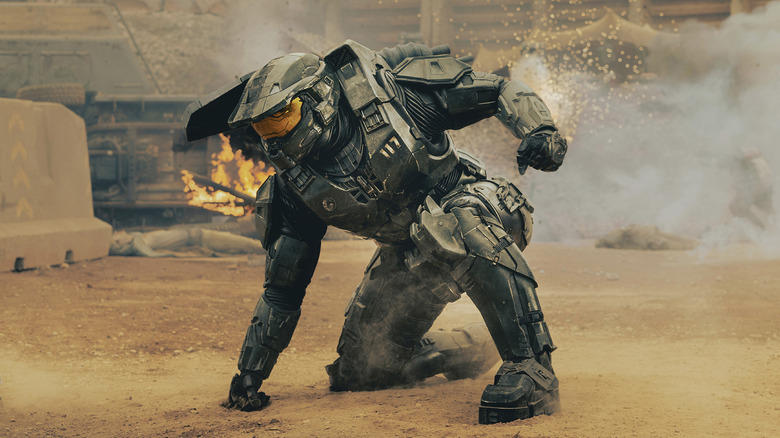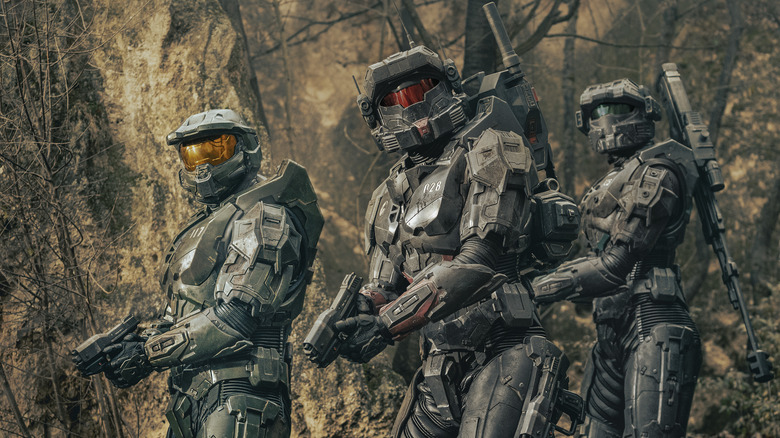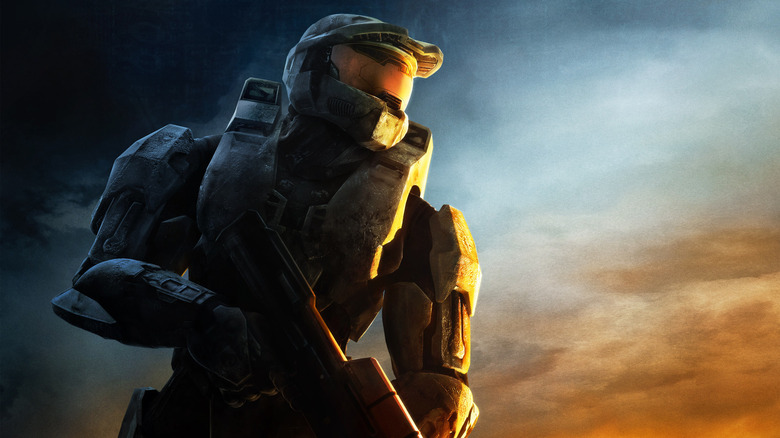Halo's Silver Timeline Explained
"Halo" has been a huge part of the pop culture landscape for more than 20 years, dating back to the original game, "Halo: Combat Evolved," that helped make the Xbox a hit back in 2001. Ever since, it has been one of the biggest gaming franchises on the planet and has been destined for Hollywood for years now. At long last, the folks at Paramount+ have realized the world of the game for the masses in a brand new, big-budget "Halo" TV show that has a multi-season commitment. But there is an important thing about the show we need to discuss and that is where it takes place in the overall timeline relative to the games.
The Silver Timeline
We won't really be getting into spoilers for the first couple of episodes but the main thing to understand here is that the show has been placed into something dubbed the "Silver Timeline" by the creative team. So what does that mean, exactly? Well, it means that the "Halo" TV show is divorced from the main timeline people know from the games. This version of Master Chief (played by Pablo Schreiber) isn't necessarily the same Master Cheif we've come to know over the years with the controller in our hands. Producer Kiki Wolfkill, who has been involved with the games for some time, previously explained it as follows:
"We're referring to this as the Halo Silver Timeline as a way of differentiating it from core canon. And both protecting core canon and protecting the television story, and by that I mean being able to give ourselves the chance to evolve both and for both to be what they need to be for their mediums without colliding with each other."
Essentially, the creative team wanted total freedom to tell the story they wanted to tell. If they were more closely adapting the games, they would have been chained to what had come before and what might come later beyond "Halo: Infinite," the latest game in the series. Whether or not that was the right decision in the eyes of fans will be up for the individual to decide but from a creative perspective, it's not entirely difficult to see why having a clean slate of sorts would make sense.
Is this a multiverse?
The producers have been somewhat vague beyond explaining that the show exists in its own timeline. Will this story eventually intersect with the story more familiar to those who have played the games? It's difficult to say. There are already major differences though, with Master Chief taking off his helmet early on in the show, something that he never did in the games. These are different beasts, that much is clear.
One way to explain all of this might be to say that there is a "Halo" multiverse, so to speak. This Master Chief, John, exists in a universe within the Silver Timeline. The Master Cheif from the game? He exists in the Xbox timeline. Multiverse storytelling has become popular, with both Marvel and DC doubling down on the idea as of late, because everything counts when you want it to count, but things can also simply be ignored. If at some point the producers decided they want the worlds to collide a little more directly, they could find some way to open up the multiverse and voila, problem solved! In any event, fans will need to make their peace with the idea that this is a new story with new iterations of these characters with familiar elements, but not a familiar whole.
"Halo" is streaming now on Paramount+.
Dramatizing an epic 26th-century conflict between humanity and an alien threat known as the Covenant, "Halo" the series will weave deeply drawn personal stories with action, adventure and a richly imagined vision of the future.


